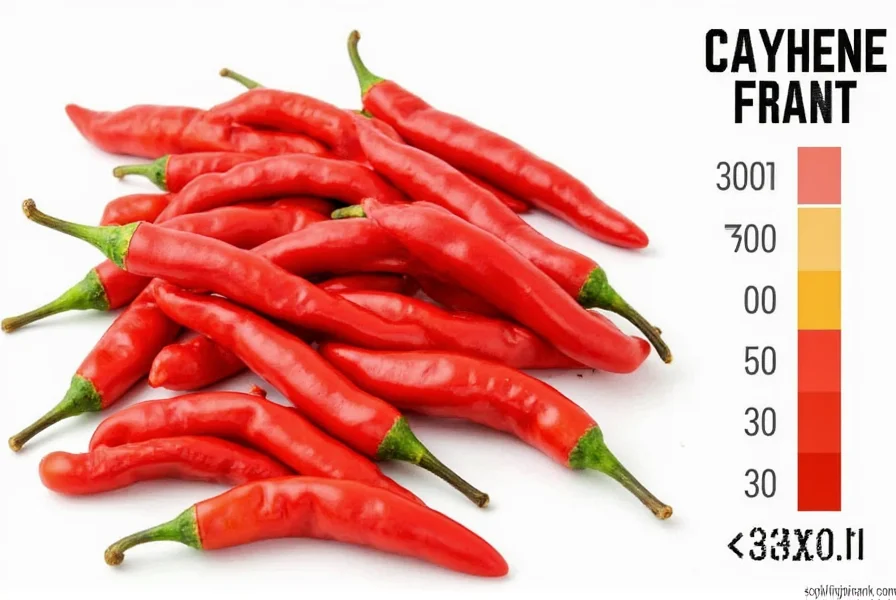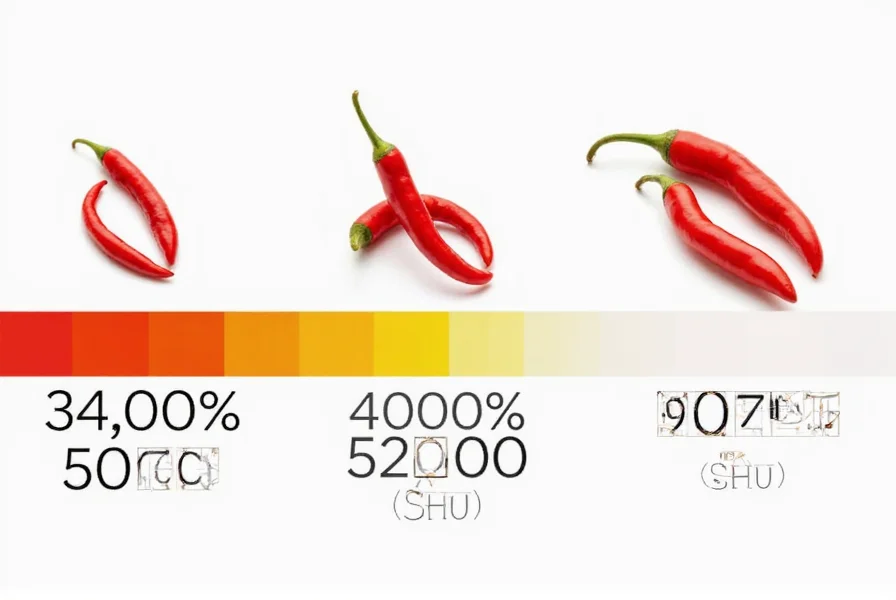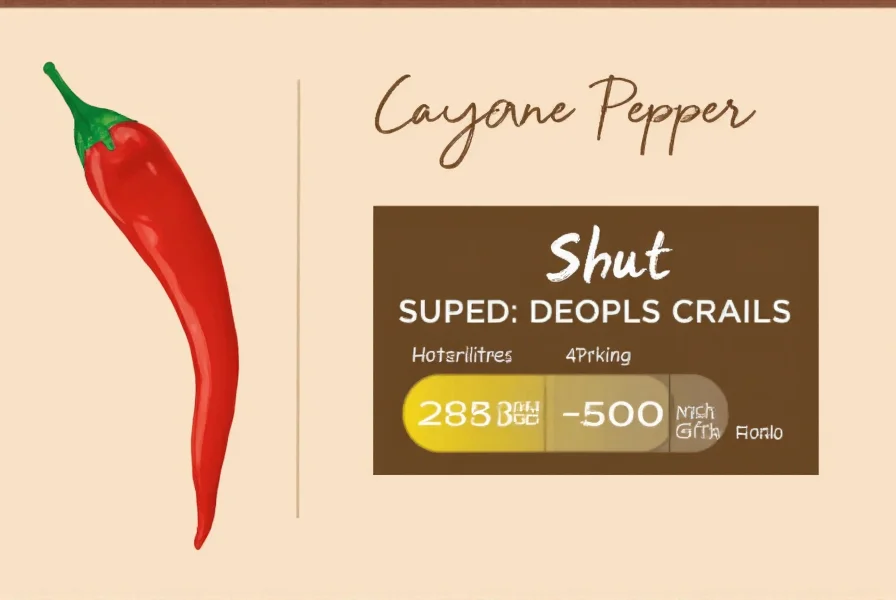Understanding the precise heat level of cayenne pepper is essential for both culinary applications and personal safety when handling hot peppers. As one of the most commonly used dried chili peppers in global cuisines, knowing where cayenne falls on the Scoville scale helps home cooks and professional chefs alike achieve desired flavor profiles without overwhelming heat.
Understanding the Scoville Scale
The Scoville scale, developed by pharmacist Wilbur Scoville in 1912, measures the pungency or "heat" of chili peppers and other spicy foods. Originally determined through human taste testing, modern measurements use high-performance liquid chromatography (HPLC) to quantify capsaicinoids—the chemical compounds responsible for spiciness.
Scoville Heat Units (SHU) represent the concentration of capsaicinoids, with higher numbers indicating greater heat intensity. The scale ranges from zero (bell peppers) to over 2 million SHU (pure capsaicin). Understanding this measurement system provides crucial context for evaluating cayenne pepper's position among other common chili varieties.
Cayenne Pepper's Precise Heat Range
Cayenne pepper (Capsicum annuum) typically registers between 30,000 and 50,000 SHU on the Scoville scale, though some cultivated varieties can reach up to 70,000 SHU. This heat level represents a significant increase over milder peppers while remaining accessible for most palates when used appropriately.
The specific heat of any given cayenne pepper depends on several factors including:
- Growing conditions (soil quality, climate, water stress)
- Genetic variety (numerous cultivars exist)
- Ripeness at harvest (fully mature peppers are hotter)
- Part of the pepper used (seeds and membranes contain the most capsaicin)
| Pepper Variety | Scoville Heat Units (SHU) | Heat Relative to Cayenne |
|---|---|---|
| Bell Pepper | 0 SHU | 0x (no heat) |
| Jalapeño | 2,500-8,000 SHU | 4-12x milder |
| Cayenne Pepper | 30,000-50,000 SHU | Baseline |
| Tabasco Pepper | 30,000-50,000 SHU | Similar heat |
| Habanero | 100,000-350,000 SHU | 2-7x hotter |
| Ghost Pepper (Bhut Jolokia) | 800,000-1,041,427 SHU | 16-35x hotter |
Practical Implications for Cooking
Understanding cayenne pepper's position on the hotness scale has direct culinary applications. When substituting cayenne in recipes, consider these practical guidelines:
For every ¼ teaspoon of cayenne pepper, you can substitute:
- 1-2 fresh jalapeños (seeds removed for milder heat)
- ½-1 teaspoon of crushed red pepper flakes
- ⅛ teaspoon of habanero powder (use extreme caution)
Chefs often recommend starting with half the recommended amount of cayenne and gradually increasing to taste, as heat perception varies significantly among individuals. The capsaicin in cayenne distributes unevenly in sauces and marinades, so thorough mixing is essential for consistent heat.

Factors Affecting Cayenne Pepper Heat Variability
Unlike standardized commercial products, natural cayenne peppers exhibit considerable heat variation. Research published in the Journal of Agricultural and Food Chemistry shows that environmental stressors like drought conditions can increase capsaicin production by up to 30%, making otherwise similar peppers significantly hotter.
Commercial cayenne powder typically provides more consistent heat than fresh peppers, as manufacturers often blend peppers from multiple sources to achieve standardization. However, even between brands, heat levels can vary by as much as 50%—a crucial consideration for recipe development and food manufacturing.
Safety Considerations with Cayenne Pepper
At 30,000-50,000 SHU, cayenne pepper requires careful handling. The capsaicin concentration is high enough to cause skin irritation and severe eye discomfort. Professional chefs recommend:
- Wearing gloves when handling fresh cayenne peppers
- Avoiding contact with face or eyes during preparation
- Using separate cutting boards for hot peppers
- Washing hands thoroughly with soap and water after handling
If capsaicin exposure occurs, dairy products (milk, yogurt) provide more effective relief than water, as capsaicin is fat-soluble. Vinegar can also help neutralize the compound on skin surfaces.

Measuring Heat in Home Kitchens
Without laboratory equipment, home cooks can estimate relative heat levels using these practical methods:
- The Milk Test: Add equal amounts of pepper to identical portions of milk; the one requiring more milk to neutralize the heat is hotter
- Time-to-Burn: Note how quickly the heat registers after tasting (faster onset indicates higher heat)
- Heat Duration: Extremely hot peppers produce longer-lasting burn sensations
While these methods don't provide precise SHU measurements, they offer valuable comparative insights when working with fresh peppers of unknown heat levels.
Conclusion
Cayenne pepper's 30,000-50,000 SHU rating places it as a versatile hot pepper suitable for adding noticeable heat without overwhelming most palates. Understanding its precise position on the Scoville scale enables more controlled and predictable results in culinary applications, whether you're seasoning everyday dishes or developing professional recipes. By recognizing the factors that influence cayenne's heat variability and implementing appropriate substitution guidelines, cooks can harness this pepper's distinctive flavor and heat profile with confidence.
Frequently Asked Questions
How does cayenne pepper compare to red pepper flakes in heat level?
Cayenne pepper and red pepper flakes typically share similar heat levels (30,000-50,000 SHU), as red pepper flakes are often made from cayenne and other moderately hot peppers. However, red pepper flakes can vary more in heat since they may contain multiple pepper varieties, while pure cayenne provides more consistent heat.
Can I substitute paprika for cayenne pepper in recipes?
Regular paprika is significantly milder (100-500 SHU) than cayenne (30,000-50,000 SHU). To substitute, use Hungarian or Spanish smoked paprika for flavor, but add a small amount of cayenne (⅛ teaspoon) for heat. For every ¼ teaspoon of cayenne, use 1-2 teaspoons of hot paprika plus a pinch of cayenne for equivalent heat.
Why does my cayenne pepper taste hotter than expected?
Cayenne heat varies due to growing conditions, with stress factors like drought increasing capsaicin production. The seeds and white membranes contain the highest concentration of capsaicin, so peppers with more intact internal structures will be hotter. Storage conditions also affect potency, with fresher peppers generally being hotter than older ones.
How much cayenne equals one jalapeño in heat?
One medium jalapeño (2,500-8,000 SHU) equals approximately 1/16 to 1/8 teaspoon of cayenne powder (30,000-50,000 SHU). For fresh substitution, use 1-2 jalapeños (with seeds removed) to approximate the heat of one cayenne pepper. Always start with less and adjust to taste, as heat perception varies among individuals.
Is cayenne pepper hotter than sriracha sauce?
Pure cayenne pepper (30,000-50,000 SHU) is significantly hotter than most sriracha sauces (1,000-2,200 SHU). Sriracha typically uses red jalapeños andscrição peppers, which are milder than cayenne. To match cayenne's heat with sriracha, you'd need approximately 15-30 times more sriracha by volume, though this would dramatically alter the dish's flavor profile.











 浙公网安备
33010002000092号
浙公网安备
33010002000092号 浙B2-20120091-4
浙B2-20120091-4